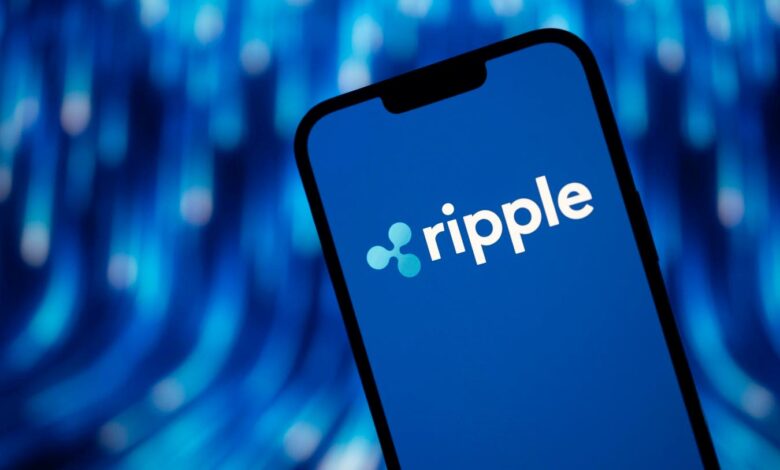Where Will XRP Be In 5 Years? Price Prediction and Analysis

📝 usncan Note: Where Will XRP Be In 5 Years? Price Prediction and Analysis
Disclaimer: This content has been prepared based on currently trending topics to increase your awareness.
Ripple’s XRP is one of the largest crypto currencies globally. What’s ahead for the currency and potentially more importantly, what will it be worth in five years?
NurPhoto via Getty Images
After years of regulatory uncertainty, XRP now operates with far greater clarity in the U.S., following the joint dismissal of appeals by the SEC and Ripple in August 2025. This resolution left the 2023 district court ruling intact: that XRP sales on public exchanges are not securities, removing a key overhang that had hampered institutional adoption for years.
With the lawsuit behind it, XRP’s next five years will be shaped by how quickly it can grow utility beyond speculation, which means having real payment corridors, deeper liquidity and integration into traditional financial products. In this piece, we’ll break down XRP’s fundamentals, market position and the forces that could define its value by 2030.
Understanding XRP And Ripple
XRP is the native token of the XRP Ledger (XRPL), a decentralized blockchain optimized for low-cost, high-speed settlement. The ledger processes transactions in three to five seconds, with fees typically under $0.01.
In March 2024, XRPL implemented a native automated market maker (AMM) through the XLS-30 amendment. This on-chain AMM allows liquidity providers to earn yield and traders to swap assets without centralized intermediaries, a feature intended to deepen liquidity and improve efficiency for XRP and issued tokens.
Ripple is the San Francisco–based fintech behind Ripple Payments (formerly RippleNet), a cross-border payment network serving banks, payment service providers and fintechs. The platform spans 90+ markets and 55+ currencies and lets institutions settle transactions via fiat, stablecoins or XRP, choosing whichever asset offers the best blend of speed, cost and compliance in each corridor.
Why XRP’s 5-Year Outlook Matters
The stakes for XRP go beyond crypto trading. Global remittances to low- and middle-income countries reached $685 billion in 2024, with average fees of about 6%, far above the UN’s target of 3%. That fee gap translates into billions in lost income for recipients, space where blockchain rails could make a measurable difference.
XRP is positioned for such flows because it can bridge two illiquid currency pairs without pre-funding nostro/vostro accounts, freeing up working capital for banks and PSPs. Whether regulators, treasurers and end-users choose XRP over stablecoins or CBDCs will largely determine its real-world market share by 2030.
Liquidity trends are also key. Kaiko data shows XRP’s order-book depth improved notably in late 2024 and 2025, a prerequisite for the tighter spreads and execution quality that institutional players require.
XRP’s Current Market Position
XRP currently trades near $2.96 with a market cap around $176 billion, ranking it among the top three cryptocurrencies by capitalization. Daily trading volume often exceeds $2 billion across major exchanges. Historical peaks differ slightly by data provider – $3.84 (CoinMarketCap) versus $3.65 (CoinGecko), but in either case, XRP is trading near its highest sustained levels since 2018.
Price History And Recent Performance
XRP’s first surge above $3 came in the 2017–18 bull run, driven by speculative enthusiasm and early Ripple partnerships. That momentum stalled as the SEC’s December 2020 lawsuit cast doubt over its regulatory status.
In July 2023, the court ruled that XRP programmatic sales on public exchanges were not securities, though some institutional sales violated securities laws. Both sides appealed, but the August 2025 mutual dismissal of appeals cemented the split ruling. The market reaction was immediate, with XRP rallying roughly 5% intraday.
Market Capitalization And Volume Trends
XRP maintains multi-billion-dollar daily turnover and broad exchange coverage. Liquidity metrics like 1% market depth have improved, making XRP more resilient during sharp market moves and more viable for large institutional orders without significant slippage.
Key Factors That Could Impact XRP’s Price in 5 Years
Institutional Adoption
Ripple has quietly built a network of production corridors using XRP as a settlement bridge. SBI Remit in Japan uses XRP for real-time payments to the Philippines, Vietnam and Indonesia. In Africa, Onafriq (formerly MFS Africa) connects 27 countries to Ripple’s rails, enabling faster remittances across the continent.
If more banks and PSPs integrate XRP into high-cost corridors, particularly in emerging markets, utility demand could rise significantly.
Ripple Payments Expansion
Ripple’s network reach gives clients the flexibility to settle in XRP, fiat or stablecoins. The launch of its RLUSD stablecoin in 2025, backed by reserves custodied with BNY Mellon, positions Ripple to onboard institutions through a regulated, dollar-denominated asset, then selectively route flows through XRP where it offers cost or liquidity advantages.
Global Remittance Market Integration
Average remittance fees of 6% leave room for cost-cutting innovation. By eliminating pre-funding requirements and enabling instant settlement, XRP could meaningfully reduce the cost of sending money abroad, if compliance frameworks in receiving countries support crypto-based rails.
Analyst Opinions And Forecasts
A Finder expert panel in July 2025 predicted an average XRP price of $2.80 by the end of 2025, rising to $5.25 by 2030. Forecasts hinge on adoption, liquidity and market-access milestones like ETFs. Multiple issuers have filed S-1 and 19b-4 forms for U.S. spot XRP products, which, if approved, could create a new demand channel from both retail and institutional investors.
Bullish Case For XRP
Legal clarity from the case dismissal removes a significant barrier for institutional integration. Ripple’s global reach and corridor optionality mean clients can start with stablecoins or fiat and shift to XRP when it delivers better economics.
The XRPL’s AMM functionality could deepen on-chain liquidity, reducing volatility and slippage, making XRP more attractive for high-volume payments and DeFi integrations. If U.S. spot ETFs launch and custody solutions expand, demand could be bolstered by passive investment flows alongside utility-driven transactions.
Bearish Case For XRP
Stablecoins could outcompete XRP in corridors where foreign exchange is minimal and volatility is undesirable, with Ripple’s own RLUSD potentially cannibalizing some bridge-asset use. Meanwhile, public-sector initiatives like CBDCs or private-sector upgrades such as SWIFT gpi could offer comparable speed and cost benefits, reducing the incentive to adopt XRP.
Execution risk is another factor. XRPL’s AMM launch in 2024 saw early technical issues that required protocol fixes which will be a challenge if the platform needs to be high-availability, high-security payment infrastructure.
Bottom Line
Over the next five years, XRP’s trajectory will depend on how much of Ripple Payments’ network volume flows through it versus fiat and stablecoins, and whether capital-markets access via ETFs materializes. The post-litigation landscape gives XRP a stronger footing, but competitive rails and execution risks remain.
If adoption accelerates in high-cost corridors and liquidity continues to improve, XRP could see both price appreciation and greater real-world utility. If not, it risks becoming just another highly traded but thinly used crypto asset.




